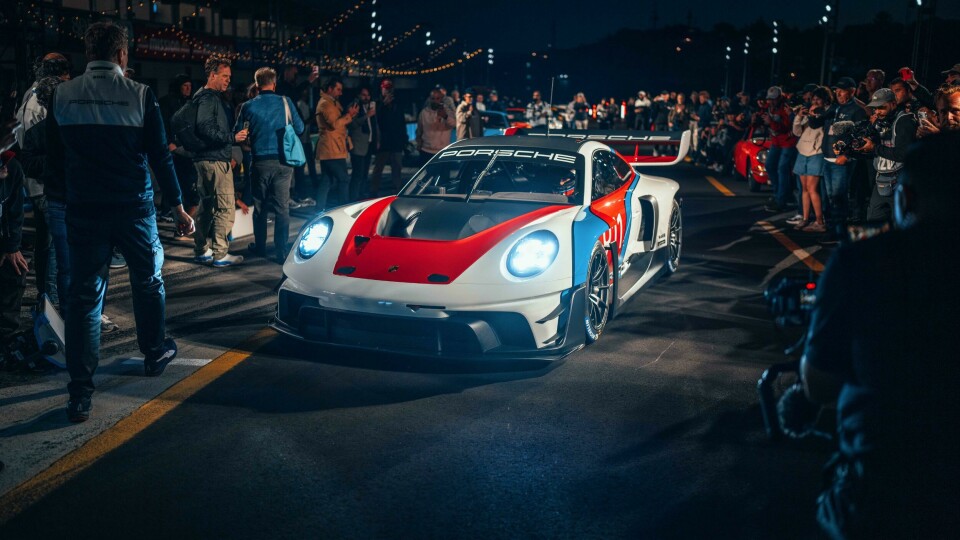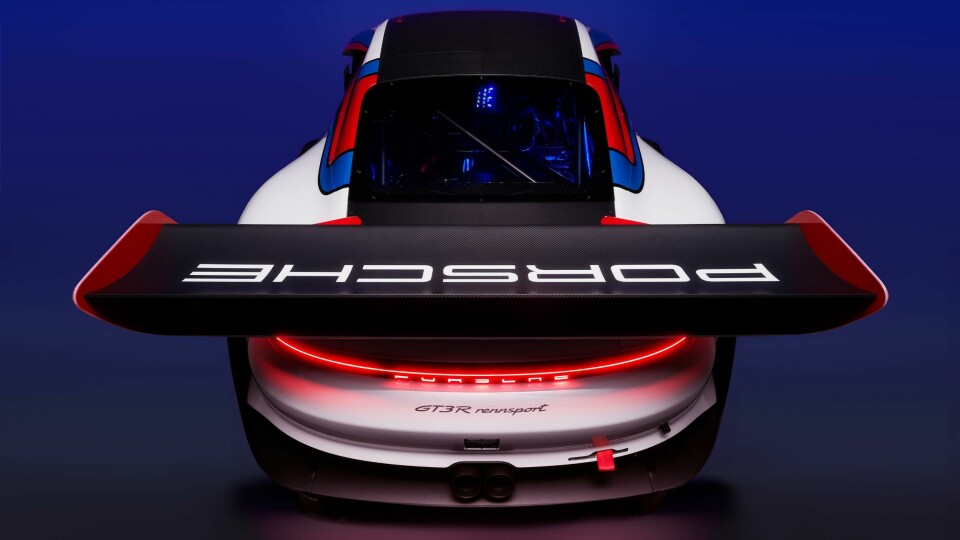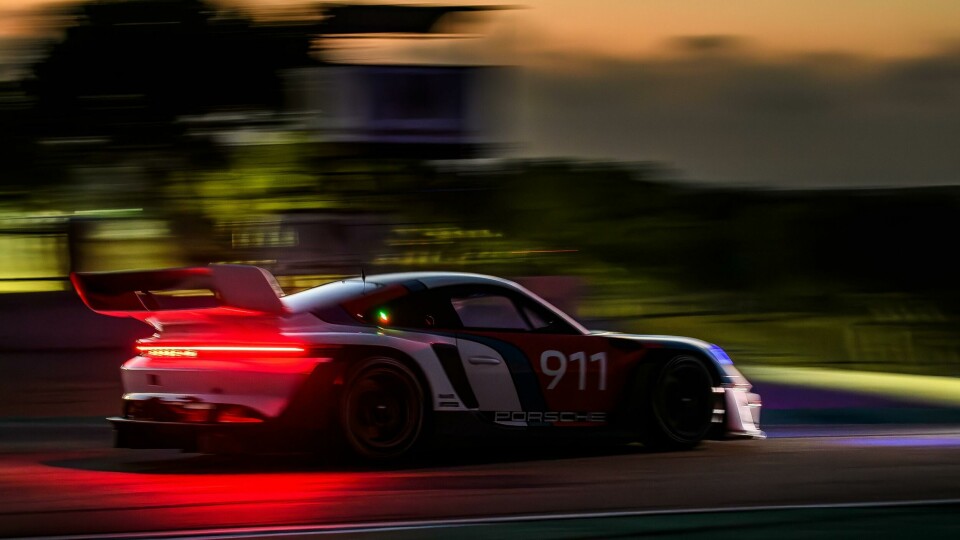
Up close: Porsche’s new $1m GT3 R Rennsport
CDN’s Laura Burstein gets a walkaround with designer Grant Larson of the track-only, limited edition supercar unveiled at Rennsport Reunion 7 in Monterey, California.
Not long after the confetti fell at the Pebble Beach Concours d’Elegance, petrolheads were back on California’s Monterey Peninsula for Rennsport Reunion 7, a worldwide gathering of everything Porsche at the legendary Laguna Seca Raceway.
From the first 356 to the recently unveiled Mission X, Rennsport boasted a dizzying array of historic cars — and many of the people who built and drove them. The newest member of the Porsche family, unveiled at the event, is the GT3 R Rennsport, a highly modified version of the 992-generation 911 GT3 with a 4.2-litre flat six engine that revs up to 9,400 rpm and makes up to 611 hp.

Based on Porsche’s current GT3 R race car, the GT3 R Rennsport is not street legal, nor is it homologated, which means it does not have to follow the strict guidelines instituted by governing bodies like the FIA.
“One thing designers always want is freedom, and we had absolute freedom with this car,” designer Grant Larson said during an exclusive walkaround.
Crafted to excel on the track, the 911 GT3 R Rennsport embraces the aerodynamically optimised geometry of the 911 GT3 R, implementing notable changes to enhance both performance and visual appeal. Accentuated volumes and exaggerated bodywork set the Rennsport version apart, with only the bonnet and the roof carrying over from the original GT3 R.
“An underlying theme is that the air flow of the car describes the form,” Larson says. Wide open bodywork that channels vast amounts of air has what he describes as a “skeletal” look. Flicks on the front fender, which stabilise the front corner of the car at high speeds, are framed by a side cowl to protect the car from damage. “This is in case of what we call … contact,” Larson muses.
Massive winglike bodywork over the front fenders hide three integrated sideview cameras in place of mirrors. He also points out the large amount of the tyre that’s on show, a difference from a homologated race car which often must conform to regulations about how much tyre is covered. In front, the light signature is a modern take on the quad lights from Porsche’s racing heritage, with a visible circuitboard pattern.

But Larson’s favourite view is from the rear. “I’m really excited about the back end,” he says. “You see a lot of visible technology. We did not try to cover it up, it’s 100 percent authentic.” Larson notes that only the rear diffuser carries over from the original GT3 R, with an imposing “whale tail” rear wing that pays homage to the legendary Brumos Porsche 935/77 that triumphed at the 24 Hours of Daytona in 1978. “The whale tail was somewhat intentional, but interpreted in a different way,” he explains.
I saw the car on the Corkscrew and my dream was fulfilled
Defying those who think a racecar can never have too much rear wing, Larson and team actually shortened the Rennsport’s by three centimeters on each side compared with the original car. “We actually thought it looked too wide,” he admits. But that presented other challenges, reminding designers that with a vehicle so dependent on performance, even a small aesthetic change can have big consequences.
“In shortening the wing, we realised the car lost a little bit of downforce, so in the final development for the production version, we’re going to compensate for that in other ways,” he says. To maintain the wing’s stiffness, Larson had to design special double vertical struts, which similarly appeared on the Porsche 962 Le Mans racing car.

Even as the GT3 R Rennsport makes few subtle references to the past, it’s firmly rooted in the present — and beyond. “Everything in the rear is complemented by our horizontal light band,” Larson says. “This is a nod to the future of what we want to do with the next generation 911.” Look further down, and you’ll see turbine-patterned, 3D-printed sleeves lining the exhaust pipes, which not only look cool, but help dissipate exhaust heat away from the rear diffuser surface.
The outside of the car might be all business, but the interior of the GT3 R Rennsport makes room for play, including screens for the external cameras and ambient lighting. “We added a lot of visual entertainment, so when you put that ambient lighting in, it looks like a movie set, which is something we’re really quite proud of,” Larson says.
This isn’t the first time Porsche revealed a customer track car at a Rennsport reunion. At the last gathering in 2018, it introduced the 991-generation 935, offered only in Agate Gray with an optional Martini livery. But the limited palette didn’t make everyone happy. “We learned from the 935 that when you do a carbon fiber race car, it’s very complicated to have it painted after the fact. So we listened to our customers and decided we would offer an expanded range of liveries and colours.” That includes the “Rennsport Reunion” design we saw in Monterey, plus seven exterior colour choices, from the subdued Agate Grey to the eye-popping Ruby Star and Signal Orange.
Only 77 units of the GT3 R Rennsport will be made, with a starting price of US$1,046,000 before transport, taxes and options. Currently, prospective buyers can register their interest on the company’s website, and as with anything Porsche, we fully expect demand to outstrip supply. Meanwhile, Larson says seeing the car in motion at the famed Laguna Seca racetrack was the ultimate reward for his work. “I saw the car on the Corkscrew and I was like, that’s it. My dream was fulfilled.”










